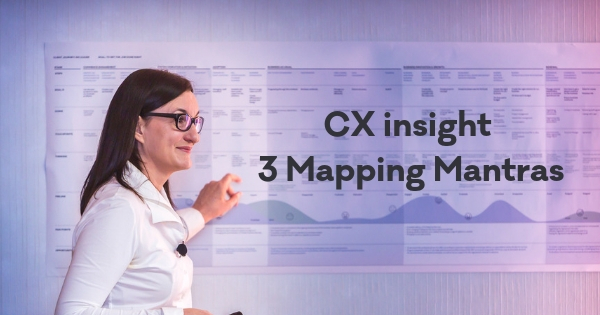Another great Qualtrics Friday CX breakfast conversation, this time in Melbourne. For this presentation on ‘Customer Journey Mapping – A CX Management Framework’ I included my 3 Mapping Mantras.
As we discussed, Customer Journey Maps as a management framework are effective in aligning employee groups to work together in creating positive customer change. A Customer Journey Map:
- Visualises the end-to-end customer journey; helping employees to understand their part in delivering the customer experience and their role in improving the experience.
- Connects and empowers employees in deeply understanding customers; their needs and expectations, trials and tribulations, pains and service gaps at each step of the experience.
- Reduces the complexities of siloed goals and the politics, biases and agendas that often influence the planning and prioritising of innovation efforts.
- Tells the customer story and in the process, gives employees an understanding of the ‘why’ behind their actions.
- Develops deep connection and builds customer empathy skills for customer-centric decision making.
I developed my Mapping Mantras to help CX enthusiasts focus their energies and efforts in 3 critical areas of Customer Journey Mapping:
THINK COMMERCIALLY
Mapping your customer journeys from the customer’s perspective is a demanding undertaking; the process requires resources, budget and coordinated effort. In haste and excitement CX enthusiasts are often remiss in establishing the business problem to be solved. One of the first steps I undertake with teams in mapping the customer journey is to think commercially and answer the question ‘what is the business problem?’ This approach links the work of improving customer experiences to clearly defined business outcomes.
ACT CROSS-FUNCTIONALLY
In my Customer Experience strategy consulting and training I have found the challenge most leaders face is uniting and aligning the business’s operational silos. As discussed in my presentation, most employees have a limited view of customers and a limited understanding of customers’ needs and expectations. Act cross-functionally by including cross-functional work groups to participate in the process of deep understanding of customers’ needs and expectations; helping them in the process to develop their customer empathy skills.
BE CUSTOMER CENTRIC
I often find that CX mapping has been undertaken using assumptive mapping, that is, mapping from the business’s perspective, rather than from the customer’s point of view. Whilst this is a positive start, it is by no means reflective of what’s actually happening in the customer’s world, nor what customers are really thinking and feeling when they’re interacting at each step of their journey. Be customer-centric; ‘listen to learn’ and tell the customer story from the customer’s perspective.

